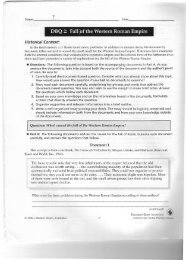Forensic Investigation Curriculum (pdf) - Darien Public Schools
Forensic Investigation Curriculum (pdf) - Darien Public Schools
Forensic Investigation Curriculum (pdf) - Darien Public Schools
You also want an ePaper? Increase the reach of your titles
YUMPU automatically turns print PDFs into web optimized ePapers that Google loves.
9.1 - Energy cannot be created or destroyed; however, energy can be converted from one<br />
form to another.<br />
• Energy enters the Earth system primarily as solar radiation, is captured by<br />
materials and photosynthetic processes, and eventually is transformed into heat.<br />
Grade 10<br />
Core Themes, Content Standards and Expected Performances<br />
Strand IV: Cell Chemistry and Biotechnology<br />
Content Standards Expected Performances<br />
Structure and Function – How are organisms structured to ensure efficiency and survival?<br />
10.1 - Fundamental life processes depend on the physical structure and the chemical<br />
activities of the cell.<br />
• Most of the chemical activities of the cell are catalyzed by enzymes that function<br />
only in a narrow range of temperature and acidity conditions.<br />
• The cellular processes of photosynthesis and respiration involve transformation of<br />
matter and energy.<br />
D 1. Describe significant similarities and differences in the basic structure of plant and<br />
animal cells.<br />
D 2. Describe the general role of DNA and RNA in protein synthesis.<br />
D 3. Describe the general role of enzymes in metabolic cell processes.<br />
D 4. Explain the role of the cell membrane in supporting cell functions.<br />
Science and Technology in Society – How do science and technology affect the quality of<br />
our lives?<br />
10.2 - Microorganisms have an essential role in life processes and cycles on Earth.<br />
• Understanding the growth and spread patterns of viruses and bacteria enables the<br />
development of methods to prevent and treat infectious diseases.<br />
D 5. Describe the similarities and differences between bacteria and viruses.<br />
D 6. Describe how bacterial and viral infectious diseases are transmitted, and explain<br />
the roles of sanitation, vaccination and antibiotic medications in the prevention and<br />
treatment of infectious diseases.<br />
D 7. Explain how bacteria and yeasts are used to produce foods for human<br />
consumption.<br />
Science and Technology in Society – How do science and technology affect the quality of<br />
our lives?<br />
10.3 - Similarities in the chemical and structural properties of DNA in all living<br />
organisms allow the transfer of genes from one organism to another.<br />
• The principles of genetics and cellular chemistry can be used to produce new<br />
foods and medicines in biotechnological processes.<br />
D 8. Describe, in general terms, how the genetic information of organisms can<br />
be altered to make them produce new materials.<br />
D 9. Explain the risks and benefits of altering the genetic composition and cell<br />
products of existing organisms.<br />
86



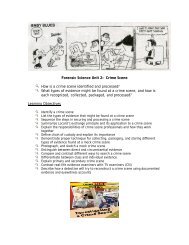
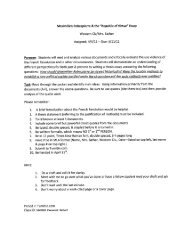

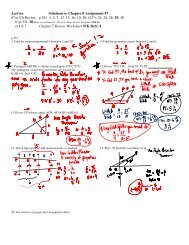
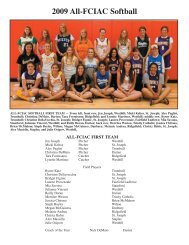

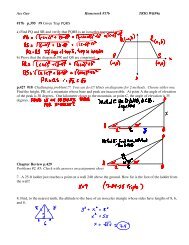
![Name Independent Practice Worksheet 23.]](https://img.yumpu.com/13527672/1/190x245/name-independent-practice-worksheet-23.jpg?quality=85)


